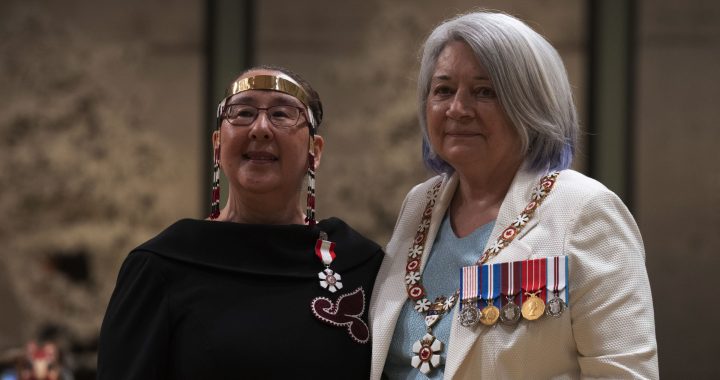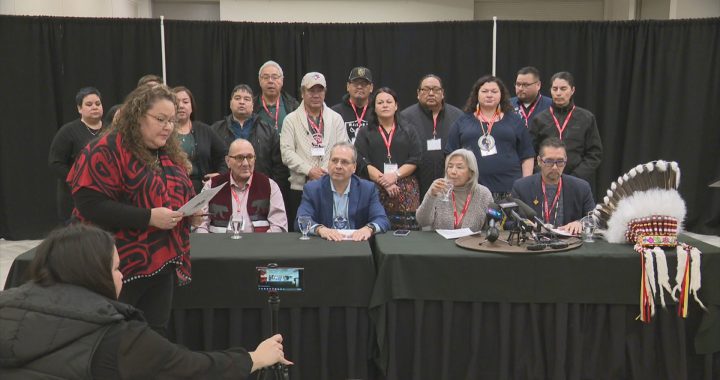Miali Coley-Sudlovenick has a small Inuk accent when she speaks, the measured tone of someone thinking in English and Inuktitut.
She loves the land, country food and shows up for our interview wearing a fur trimmed handmade parka.
She is Inuk.
She is also Black.
Her Mom is Inuk and her father’s family is Jamaican.
Coley-Sudlovenick wrote a new play in conjunction with 21 Black Futures, a festival being presented by the Obsedion Theatre.
In her newest work, she tried to show all sides of her experience.
The play is called Blackberries and tells the story of a young Black and Inuit woman named Effie who was raised in the south, and returns north for a funeral.
That is the opposite of Coley-Sudlovenick’s experience, she was raised in the North.
“I drew from my own experiences, either things I’ve lived or seen,” explains Coley-Sudlovenick. “Effie is somebody who grew up in the South, where as I grew up here in Iqaluit.
“While she’s up here, she has an opportunity to get out on the land, and chat with her cousin, who is somebody helping her to identify herself through expressing herself to her cousin.”
A common Nunavut question is: Where are you from. But where are you from really?
Coley-Sudlovenick is really from Iqaluit, but being black has her answering questions from those who don’t know her history.
“Having grown up here in Iqaluit, there are a lot of assumptions about what it means to grow up Black in the North,” explains Coley-Sudlovenick. “People ask if I’m possibly from somewhere else. I often get the question, ‘Where are you from, but where are you really from.’”
If you want to know where Coley-Sudlovenick is really from, you have to look at her roots.
Her mother Elisapi Aningmiuq in a Nunavut institution.
She is a Member of the Order of Canada for her work at the Tukisigiarvik Wellness Centre and for her advocacy for Inuit.
When Prime Minister Justin Trudeau came to Iqaluit to apologize for the historical treatment of Inuit with tuberculosis, Aningmiuq was the one who lit and tended the qulliq, the Inuit traditional lamp that now plays a prominent role in Inuit celebrations.
Aningmiuq explains she raised her daughter “just like the rest of my kids.” She did have one difference, that will be all too familiar to parents of Black children. “I think the only difference I saw in Miali when she was growing, and I think was one of the hardest times, was combing her hair,” says Aningmiuq with a chuckle. “It was curly, and if it was long I had to be careful that I wasn’t hurting her too much.”
Her father is Audley Coley, originally from Jamaica, moved to Toronto, and now resides in Montreal. He describes getting off the plane in Iqaluit (then Frobisher Bay) in 1978 and realizing there were only 5 other Black people in the community. He can still name all five them, a storyteller like his daughter.
“My daughter, I’m so proud of her, to see the person she has developed as. I can only give her my view as a Black man, as a Jamaican with a Jamaican background,” explained Coley.
“Her mother does amazing work from the Inuit perspective. Even though we might not be together as a couple, my daughter is the benefactor of two incredible people.”
Inuit and Black culture may be different, but with her dual lens, Coley-Sudlovenick does see where the two cross over.
“I think the joy of storytelling, the laughter, eating together,” she explains. “I think those have been the things that have been really highlighted when I visited my family members, either in Jamaica or in Canada. When we visit them, it feels like home.
“I feel really at ease. We eat together, we’re able to laugh, and we just really enjoy the space we created.”










